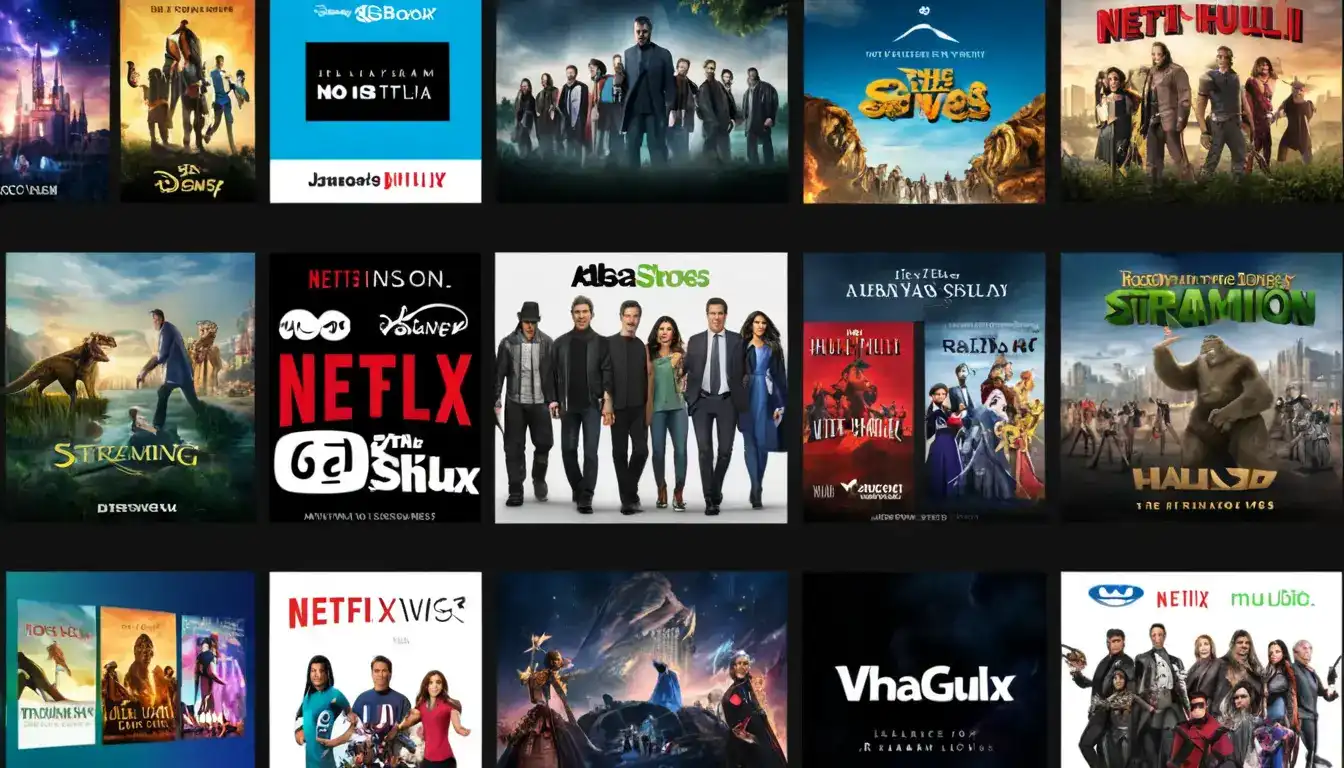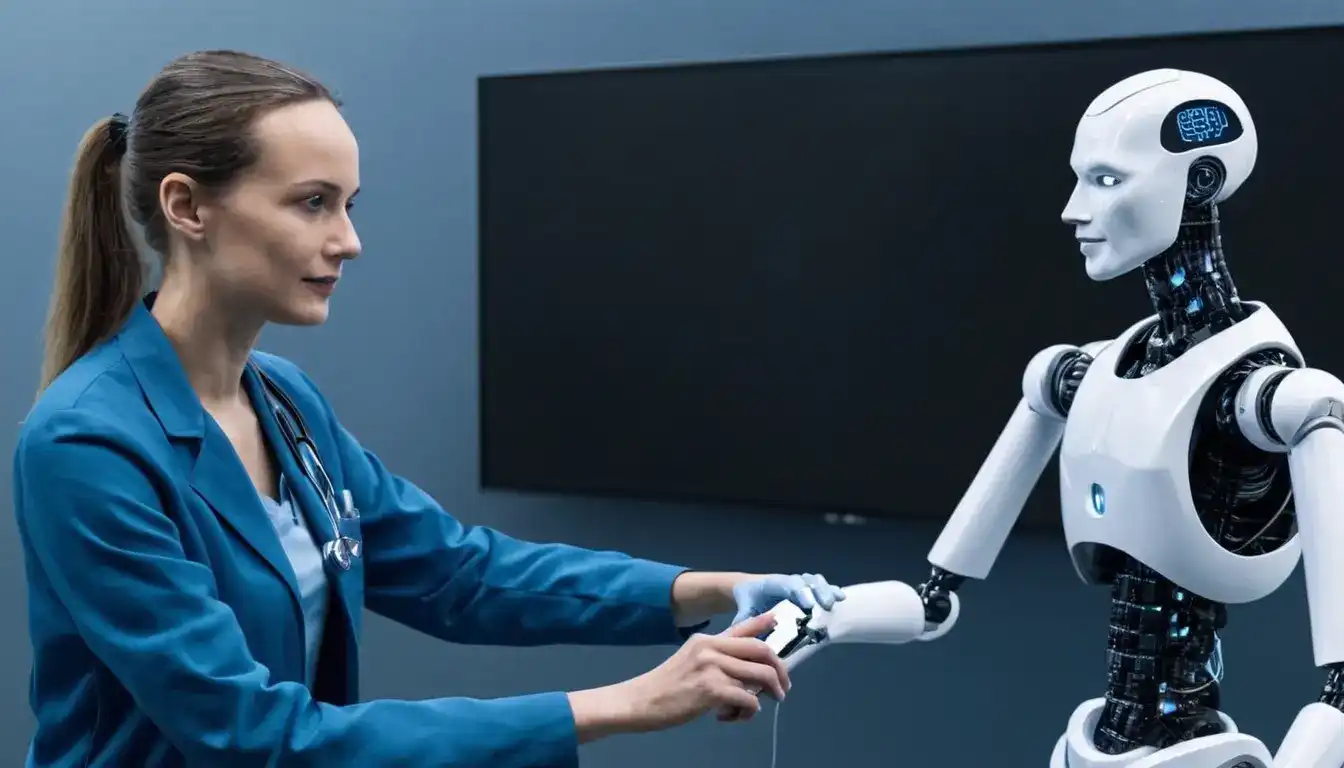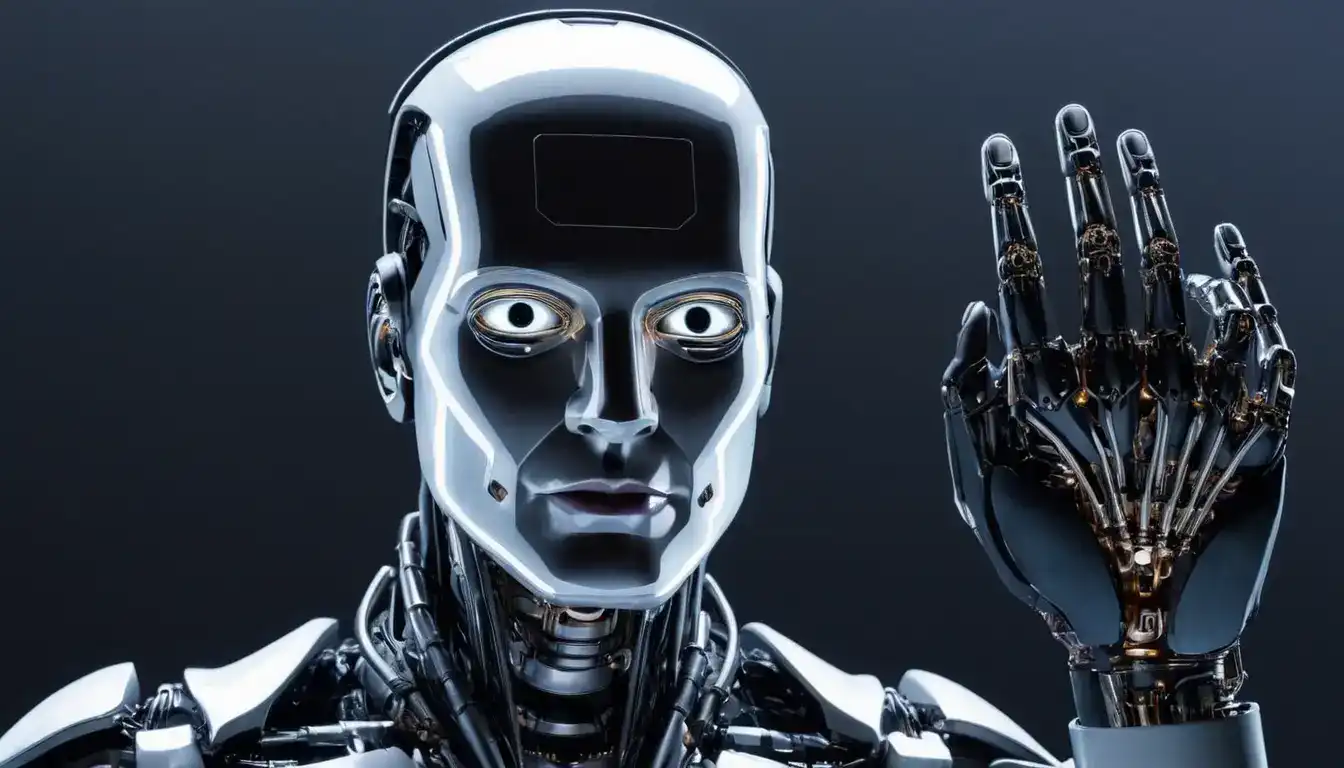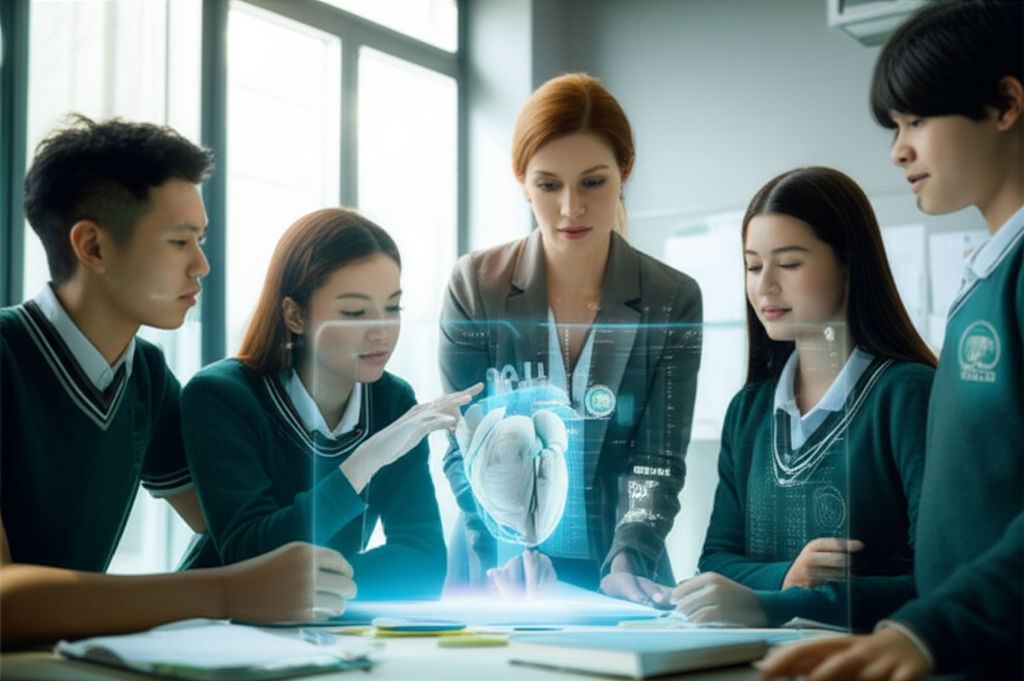Teacher-Student Relations: Digital Age Future
Emily Willis

Photo: Teacher-Student Relations: Digital Age Future
Navigating the Digital Frontier: Cultivating Strong Teacher-Student Relations in the Future of Education
The world around us is constantly changing, and perhaps nowhere is this more evident than in the realm of education. Gone are the days when learning was confined solely to four classroom walls and a blackboard. Today, the digital age has thrown open the doors to a universe of knowledge, transforming how teachers teach and students learn. But amidst all this exciting technological advancement, one fundamental element remains absolutely crucial: the teacher-student relationship. It’s the heart of effective learning, fostering trust, motivation, and academic success.
While technology offers incredible opportunities to enhance these bonds, it also introduces new challenges. How do we ensure that genuine connection thrives when interactions increasingly happen through screens? This article will explore the evolving landscape of teacher-student relations in the digital age, offering practical insights and actionable steps to build and maintain strong, supportive relationships that are ready for the future of education.
The Evolving Landscape: Why Digital Matters for Teacher-Student Bonds
The rise of digital technology has dramatically reshaped how teachers and students connect. From virtual classrooms to instant communication, the traditional dynamics are shifting. Online learning platforms like Google Classroom, Zoom, and Microsoft Teams allow students and teachers to interact from anywhere, making education more accessible than ever before. This accessibility was particularly highlighted during the COVID-19 pandemic, which accelerated the adoption of online learning and forced a rapid adaptation to new digital tools.
However, this shift isn't without its complexities. Some initially felt that technology could create a "barrier" or make relationships more "detached" and "indirect". Yet, many now embrace new technologies, believing that online relationships can be just as real and intimate as those in a physical classroom, provided they are implemented correctly. The key is to understand that the teacher-student relationship is changing, with fewer traditional barriers and less physical distance than before.
Bridging the Digital Divide: Tools and Strategies for Connection
So, how can we leverage technology to strengthen these vital connections? It's about being intentional and creative with the digital tools at our disposal.
Communication Platforms: Staying Connected Instantly
Modern communication tools have made it easier than ever for teachers and students to interact. Teachers can send updates, assignments, or feedback instantly via email, messaging apps, or educational platforms, significantly reducing communication gaps. This instant feedback is crucial for keeping students engaged and motivated, as they don't have to wait days or weeks for responses.
- Learning Management Systems (LMS): Platforms like Canvas, Moodle, or Google Classroom serve as central hubs for assignments, announcements, and discussions. Regular, personalized communication through these systems can make students feel valued and heard.
- Video Conferencing Tools: Zoom, Google Meet, and Microsoft Teams enable face-to-face interaction, even when physically apart. Using video calls for lessons, virtual office hours, or even casual check-ins can help maintain a sense of presence and personal connection.
- Messaging Apps: Secure, school-approved messaging apps can facilitate quick questions and answers, fostering a more approachable relationship.
Personalized Learning: Tailoring Education to Each Student
One of the most powerful ways technology enhances teacher-student relations is through personalized learning. This approach tailors the learning experience to each student's unique abilities, background, and skills, allowing them to adjust the curriculum, learning environment, and pace to align with their strengths. When teachers understand individual needs and tailor their instruction, it boosts student engagement, improves academic results, and strengthens the bond between students and educators.
- Adaptive Learning Platforms: These platforms use AI to analyze student performance data, identify unique learning patterns, and provide real-time feedback and targeted support. This allows teachers to pinpoint areas where students need extra help and adjust their teaching methods accordingly.
- Curated Resources: Teachers can use digital tools to provide diverse learning materials—from videos and interactive simulations to articles and games—that cater to different learning styles and interests. This shows students that their individual preferences are considered.
- AI-Powered Insights: AI can help teachers reclaim significant time by automating administrative tasks, allowing them to focus more on meaningful interactions and personalized mentorship. This freed-up time can be used for one-on-one check-ins or deeper engagement with student work.
Interactive Digital Activities: Making Learning Engaging
Technology can transform passive learning into an interactive and fun experience, directly impacting student engagement.
- Gamified Learning: Incorporating elements like badges, points, and leaderboards can make learning more enjoyable and motivate students to participate.
- Interactive Quizzes and Polls: Tools like Kahoot! or Mentimeter can be used during live or asynchronous sessions to gauge understanding and encourage active participation.
- Collaborative Documents: Platforms like Google Docs or Microsoft 365 allow students to work together on projects in real-time, fostering teamwork and digital communication skills.
Beyond the Screen: Nurturing Emotional and Social Connections Online
While tools are important, the human element remains paramount. Building strong teacher-student relationships in the digital age means actively cultivating empathy, respect, and a sense of community, even when interactions are virtual.
Creating Safe and Inclusive Online Environments
Just like in a physical classroom, a positive online learning environment is built on trust and respect.
- Establish Clear Netiquette: Set clear rules for online communication from the start, addressing issues like "flaming" (angry comments) and cyber-bullying, just as you would in a traditional classroom.
- Promote Open Communication: Encourage students to share their experiences, goals, and concerns. Tailor communications to show that you value their input and different communication styles.
- Foster a Sense of Belonging: Use icebreakers, group projects, and even class social media groups (if appropriate and secure) to help students connect with each other and with you.
Addressing Digital Distractions and Maintaining Focus
The digital world is full of distractions, from social media to online games. Teachers need strategies to help students maintain focus and engagement.
- Interactive Sessions: Keep online lessons dynamic with polls, quizzes, and breakout rooms to ensure active participation rather than passive attendance.
- Consistent, Constructive Feedback: Regular and personalized feedback on assignments is crucial for student progress and building rapport. Focus feedback on the process and effort, not just the outcome.
- Flexible Learning Options: Digital learning allows for flexibility, letting students learn at their own pace and revisit recorded lectures. This can reduce stress and help students manage their learning more effectively.
Promoting Digital Citizenship and Responsible Online Behavior
As students become more immersed in digital spaces, teaching digital citizenship becomes increasingly vital. This involves equipping students with the knowledge, skills, and appropriate behaviors to use technology safely, responsibly, and ethically.
- Model Responsible Behavior: Teachers should lead by example, demonstrating respectful and civil online interactions.
- Teach Critical Media Literacy: Help students discern credible information and understand the impact of their online words and actions.
- Address Privacy and Security: Discuss the importance of data privacy and responsible sharing of personal information online.
The Teacher's Role in the Digital Future: Adaptability and Innovation
The digital age is redefining the teacher's role. No longer just knowledge dispensers, teachers are becoming facilitators, guides, and mentors who help students navigate a vast sea of information.
- Upskilling for Digital Pedagogy: Teachers need ongoing professional development to stay updated with the latest educational technology and integrate it effectively into their teaching strategies. This includes understanding how to use AI tools to enhance productivity and create engaging lessons.
- Balancing Technology with Human Interaction: While technology offers amazing tools, it cannot replace the human touch, emotional intelligence, and mentorship that teachers provide. The goal is to combine the best of both worlds for optimal student outcomes.
- Becoming a Digital Mentor: Teachers guide students not just academically, but also in developing essential 21st-century skills like critical thinking, problem-solving, collaboration, and adaptability in a digital context.
- Leveraging Data Ethically: AI systems can provide valuable insights into student performance, allowing teachers to identify individual needs and adjust teaching methods. However, it's crucial to use this data ethically, ensuring student privacy and using insights to strengthen the teacher-student bond, not diminish it.
The Student's Role: Active Participants in a Digital Relationship
Students, often referred to as "digital natives," are inherently comfortable with technology. In the digital age, their role also evolves towards greater self-direction and responsibility.
- Self-Direction and Responsibility: Digital learning empowers students to manage their own learning paths, choosing content, setting schedules, and determining methods. This fosters important soft skills like time management and self-discipline.
- Effective Digital Communication: Students need to learn how to communicate effectively and respectfully in online environments, understanding appropriate academic language and etiquette.
- Seeking Support in a Virtual Environment: Students should feel comfortable reaching out to teachers for help through various digital channels, such as virtual office hours or direct messages.
- Collaborating Digitally: Engaging in online group projects and peer reviews helps students develop collaborative skills essential for the modern workforce.
Challenges and Solutions in the Digital Age
Despite the immense potential, the
Latest ✨
View Allconcept of minimalism as a way to declutter and simplify one's life. It highlights the benefits of minimalism, such as reduced stress, increased focus, and financial freedom.
Emily Willis
The traditional office environment is no longer the only place where productivity happens. Remote work has become a mainstream reality for many businesses, offering benefits such as increased employee flexibility, reduced overhead costs, and access to a wider talent pool.
Emily Willis
practical tips for fostering a love of learning in children. It emphasizes the importance of understanding and catering to diverse learning styles, making learning relevant and engaging, fostering a growth mindset, creating a supportive learning environment, and extending the love of learning beyond the classroom.
Emily Willis
culinary landscapes of Italy, France, and Japan, highlighting the unique and mouthwatering cuisines of each country. It explores the simplicity of Italian cuisine, the elegance of French cuisine, and the delicate dance of flavors in Japanese cuisine. It also delves into the cultural immersion of each country's culinary customs, emphasizing the joy of conviviality in Italy, the celebration of refinement in France, and the harmony of flavors and aesthetics in Japan.
Emily Willis
Business
View All
June 9, 2025
Achieve Customer Service ExcellenceMaster customer service excellence to build lasting loyalty & drive growth. Get your blueprint for success and exceed customer expectations!
Emily Willis

June 8, 2025
Optimize Your Supply ChainOptimize your supply chain for business success! Learn strategies to cut costs, boost efficiency, & satisfy customers with our comprehensive guide.
Emily Willis

June 8, 2025
PR Essentials for Business ExposureMaster public relations to boost your business. Discover core PR essentials for building trust, enhancing brand visibility, and driving growth.
Emily Willis
Economy
View AllDeflation explained: Discover why falling prices can harm the economy. Learn its causes, effects, and how to protect your finances.
Read MoreLooking to save on car insurance? Discover how to get accurate, personalized car insurance quotes online with this comprehensive guide. Fast, easy, and cost-effective.
Read MoreDeveloped economies face a new global order. Understand how they're adapting to multipolar power, tech disruption, and climate change for future prosperity.
Read MoreEntertainment
View All
August 4, 2024
Profiles of Famous Artists Who Inspire the Younger Generationthe inspirational aspects of famous artists such as Vincent van Gogh, Frida Kahlo, Pablo Picasso, Banksy, Yayoi Kusama, Jean-Michel Basquiat, Georgia O'Keeffe, Andy Warhol, Kehinde Wiley, and Ai Weiwei. It highlights their perseverance, innovation, authenticity, social commentary, mental health advocacy, and representation, among other qualities, and how these aspects continue to inspire young artists to pursue their creative dreams.
Emily Willis

August 5, 2024
Fandom's Power: Passionate Communities and Cultural ImpactFandoms are dedicated groups of fans who come together around a shared love for a book series, movie franchise, or other interest. They provide a sense of belonging and community for individuals, particularly those who may feel like outsiders in their everyday lives.
Emily Willis

August 4, 2024
The Evolution of Streaming Services Such as Netflix, Disney+, Hulu, and the Implications for the Traditional Entertainment IndustryThe rise of streaming services has revolutionized the entertainment industry, offering on-demand access to a vast library of content through internet-connected devices. Platforms like Netflix, Disney+, and Hulu have diversified their content libraries, reshaped consumer behavior, and challenged traditional distribution models. Technological advancements have enhanced streaming experiences, while economic and cultural implications have led to global market expansion and increased investment in original content production. The future of the streaming industry will be shaped by competition, convergence of media and technology, and the need for adaptation to changing consumer preferences. Embracing digital transformation and strategic partnerships will be crucial for stakeholders in navigating the evolving landscape of modern entertainment.
Emily Willis
Health
View Allmaintaining good health and well-being through nutritional choices. A balanced diet, incorporating whole foods, staying hydrated, consuming nutrient-dense foods, managing portion sizes, practicing mindful eating, eating regular meals and snacks, considering supplements, and adopting sustainable eating practices are all highlighted as effective strategies for enhancing overall.
Emily Willis
Quality sleep is essential for overall health and well-being, impacting physical, cognitive and emotional functioning. Lack of quality sleep can lead to a variety of health issues, including weakened immune function, heart problems, weight gain and cognitive impairment.
Emily Willis
cultivating healthy lifestyle habits to improve overall well-being. It focuses on three pillars of well-being: nutrition, exercise, and sleep. It provides tips on how to incorporate these practices into daily routines, such as eating a variety of foods, finding enjoyable forms of exercise, and establishing a consistent sleep schedule.
Emily Willis
Trending 🔥
View All
2
3
5
6
7
8
9
10
Sports
View AllAugust 4, 2024
Sports Technology Innovation: Revolutionizing Training and Performance Analysis
Read MoreAugust 5, 2024
Celebrating Sports Legends: Honoring Iconic Figures and Their Enduring Impact
Read MoreAugust 4, 2024
The Importance of Mental Training and Psychological Strategies in Helping Athletes Reach Their Peak Performance on the Field
Read MoreTechnology
View All
August 4, 2024
Revolutionizing Healthcare with Artificial Intelligence: Current Trends and Future Prospects
Artificial Intelligence (AI) is transforming the healthcare industry by improving diagnostic accuracy, personalizing treatment plans, and accelerating drug discovery. AI applications in diagnostics, imaging, patient care, and drug development are enhancing efficiency and patient outcomes. However, ethical considerations such as data privacy and algorithm bias must be addressed. The future of AI in healthcare looks promising with advancements in natural language processing, robotic surgery, and remote patient monitoring. Embracing AI technologies responsibly will lead to a more accessible, efficient, and patient-centered healthcare system.

August 5, 2024
How to Choose the Right Cyber Security Solution for Your Business
In today's digital age, businesses face numerous cybersecurity threats and need to protect sensitive data. To choose the right cybersecurity solution, businesses should understand their specific needs, assess potential threats, evaluate different solutions, consider ease of use and integration, evaluate the provider's reputation and support, conduct a cost-benefit analysis, and implement and monitor the solution effectively.

August 5, 2024
The Impact of AI on the Future of Work and Education
AI is rapidly advancing and reshaping industries, economies, and societies, especially in the areas of employment and education. In the workplace, AI is changing roles through automation and creating new job opportunities. The future of work will most likely involve collaboration between humans and AI, requiring workers to develop new skills and engage in lifelong learning.

August 4, 2024
The Rise of Edge Computing: Transforming Data Processing
Edge computing is a distributed computing model that processes data closer to its source, reducing latency, saving bandwidth, and enhancing security. It is transforming industries such as manufacturing, healthcare, retail, transportation, and energy by enabling real-time data processing and improving operational efficiency.





















